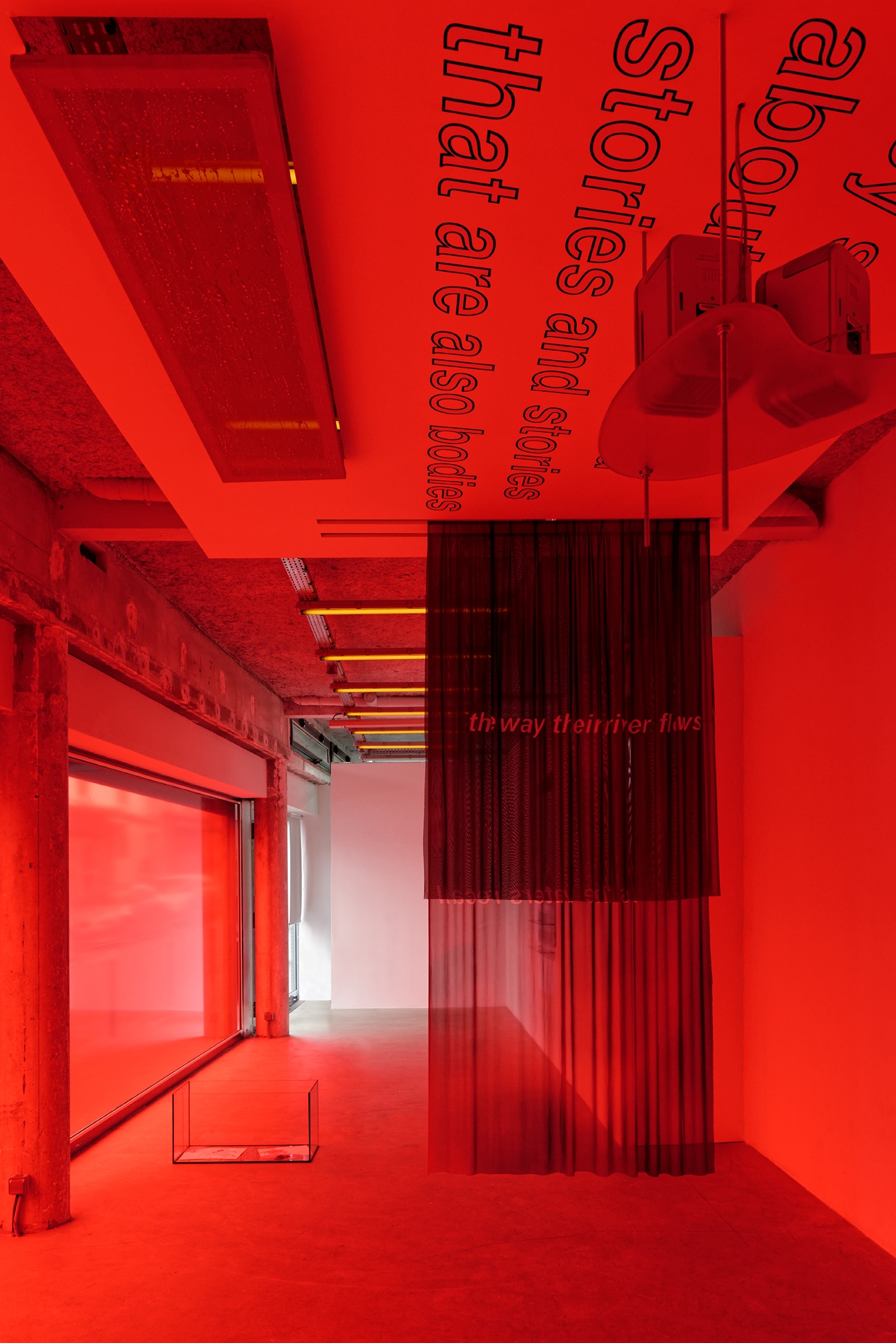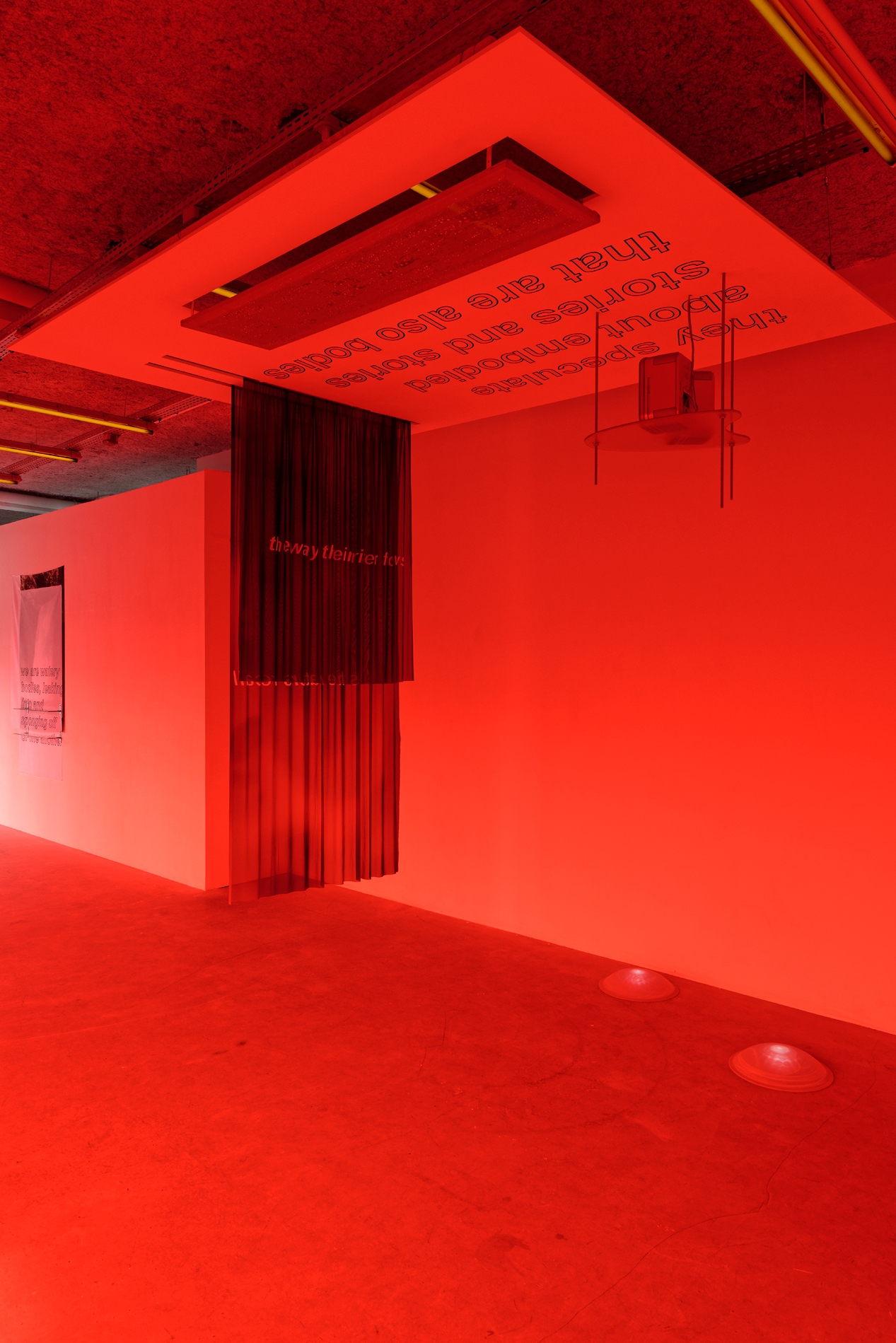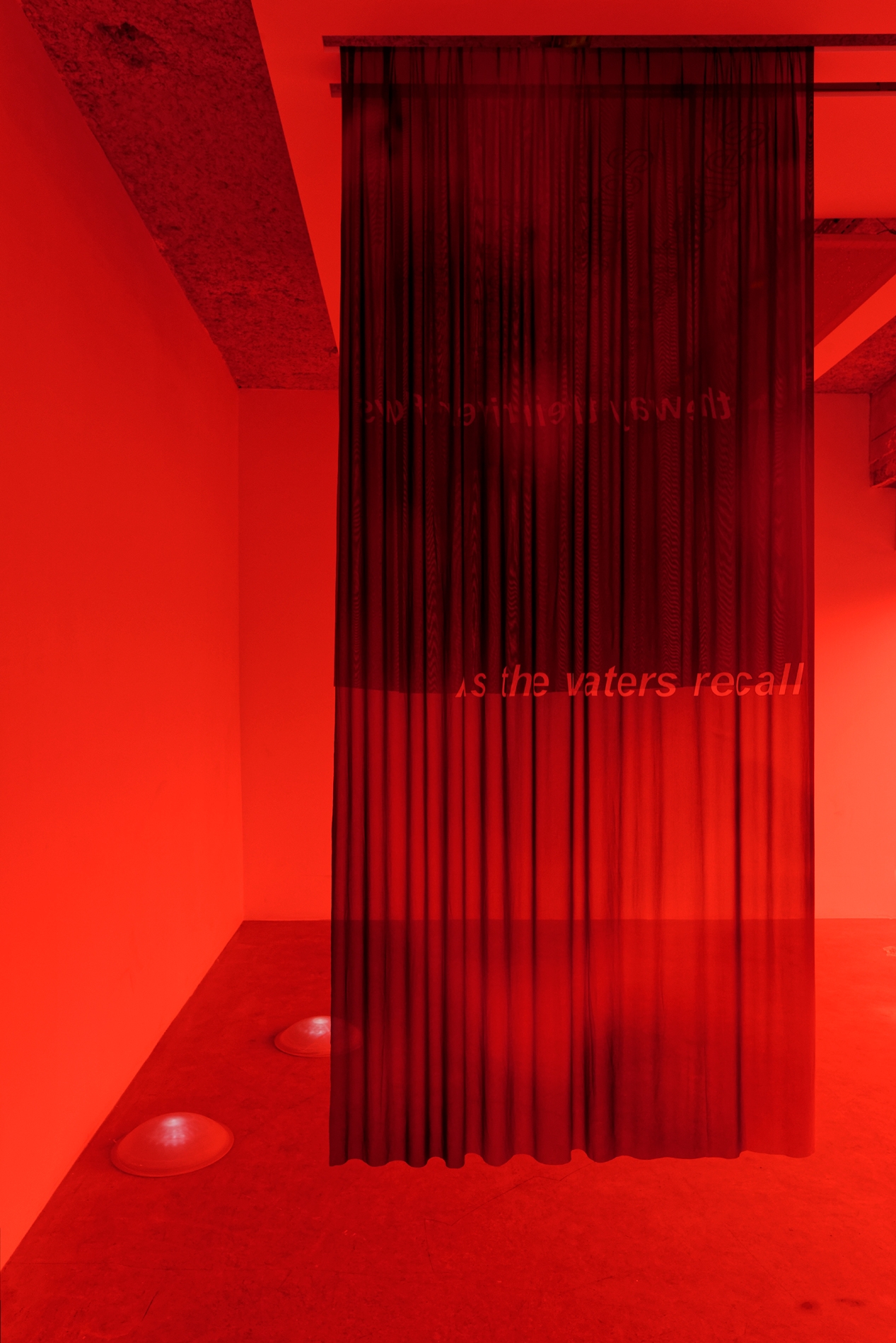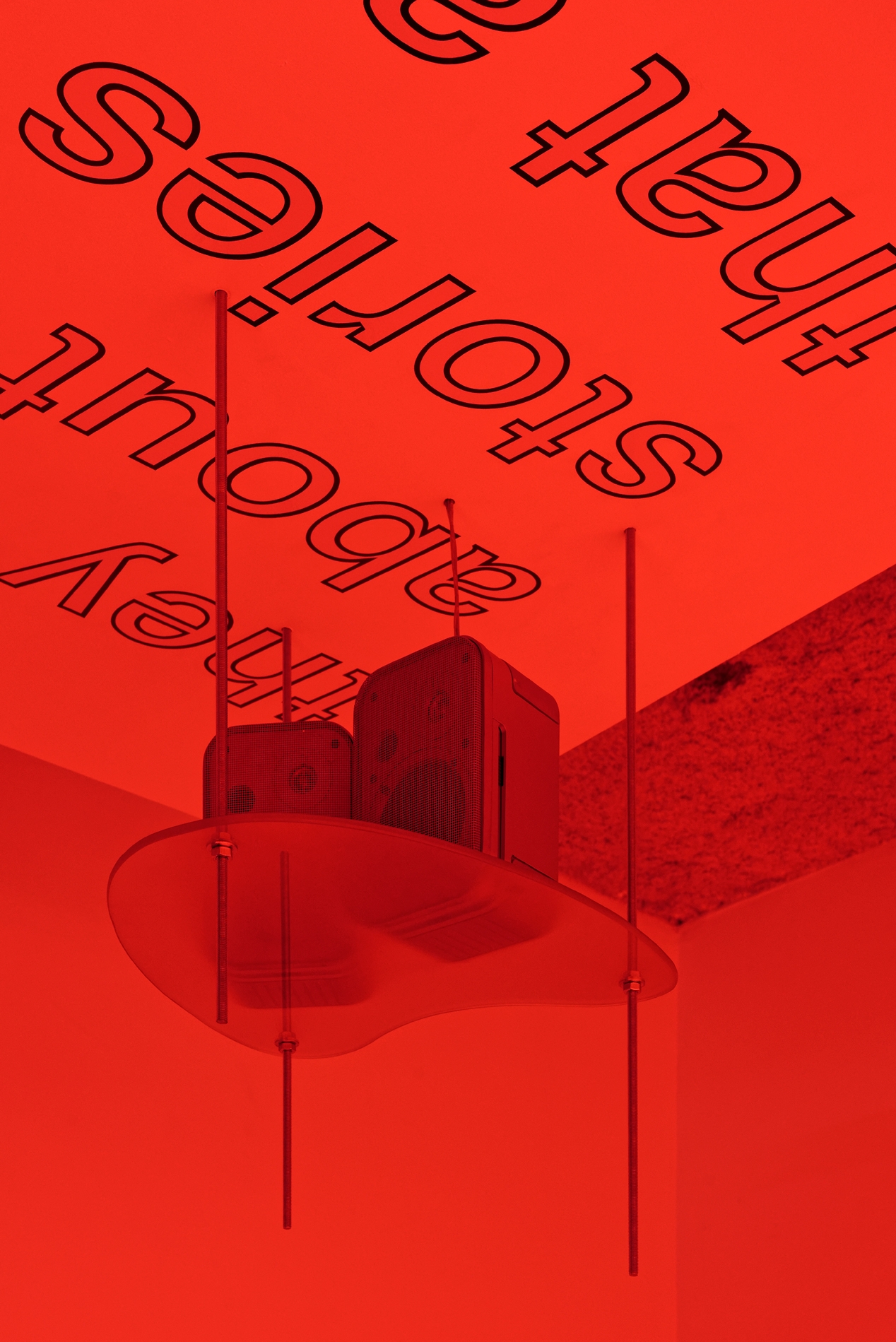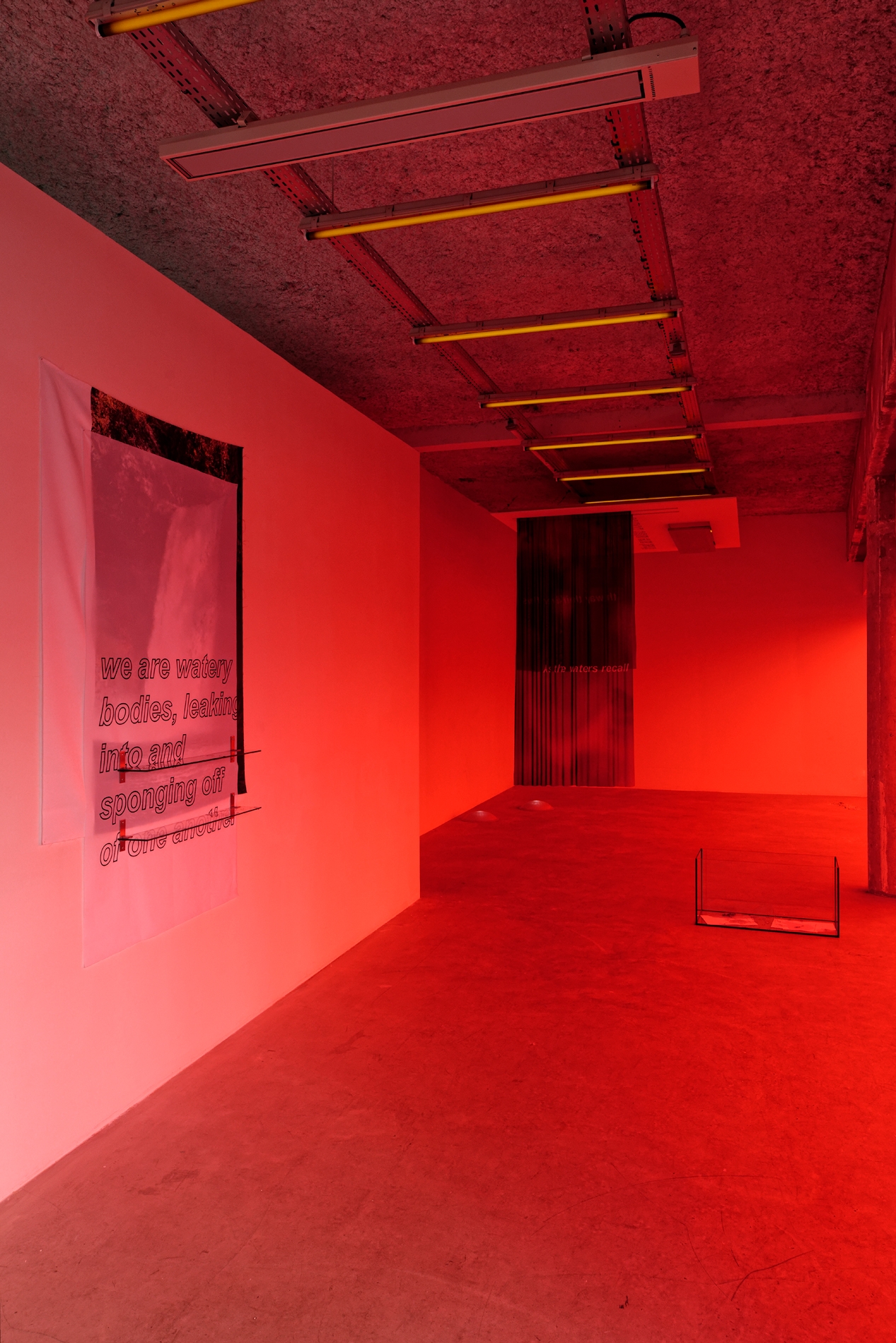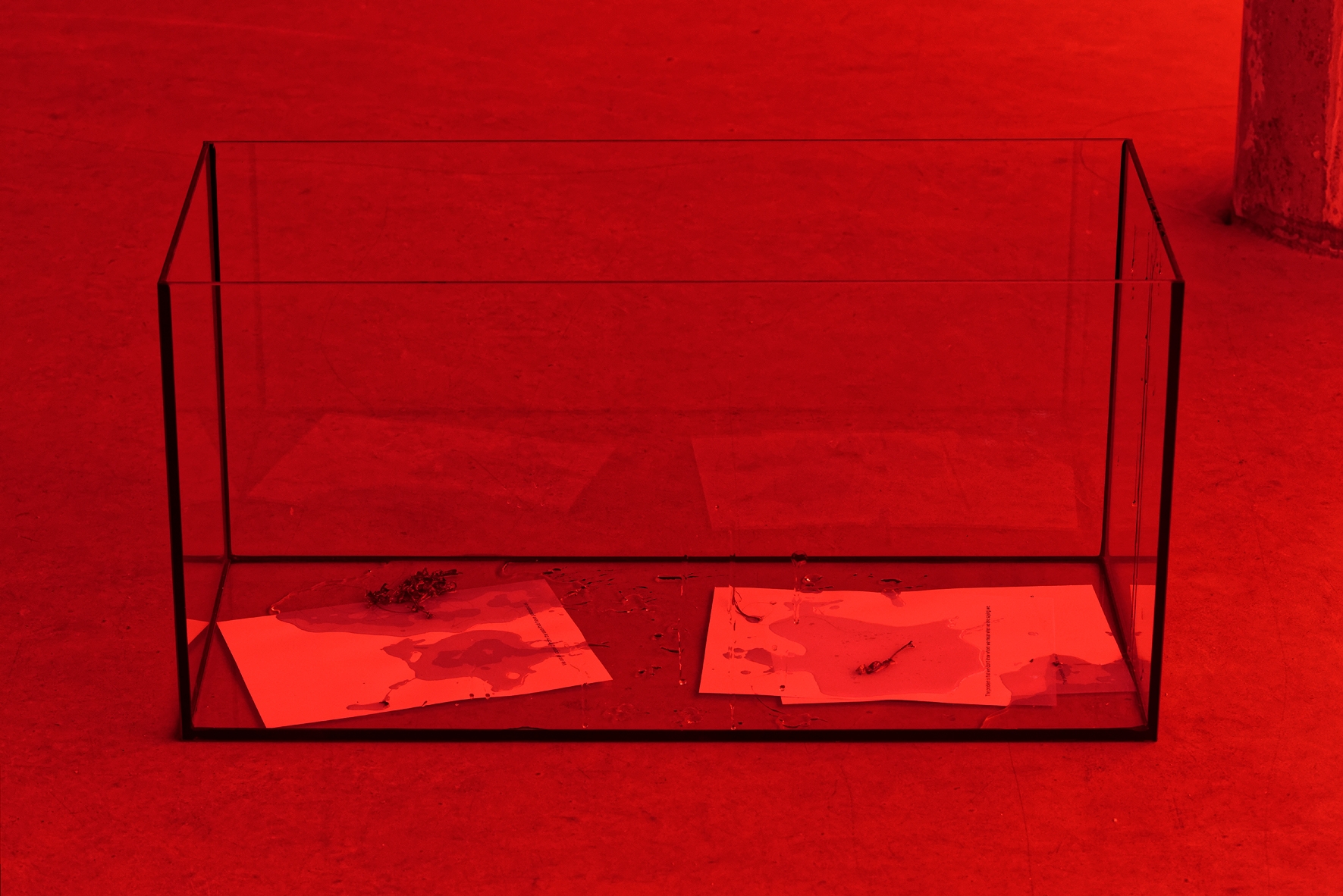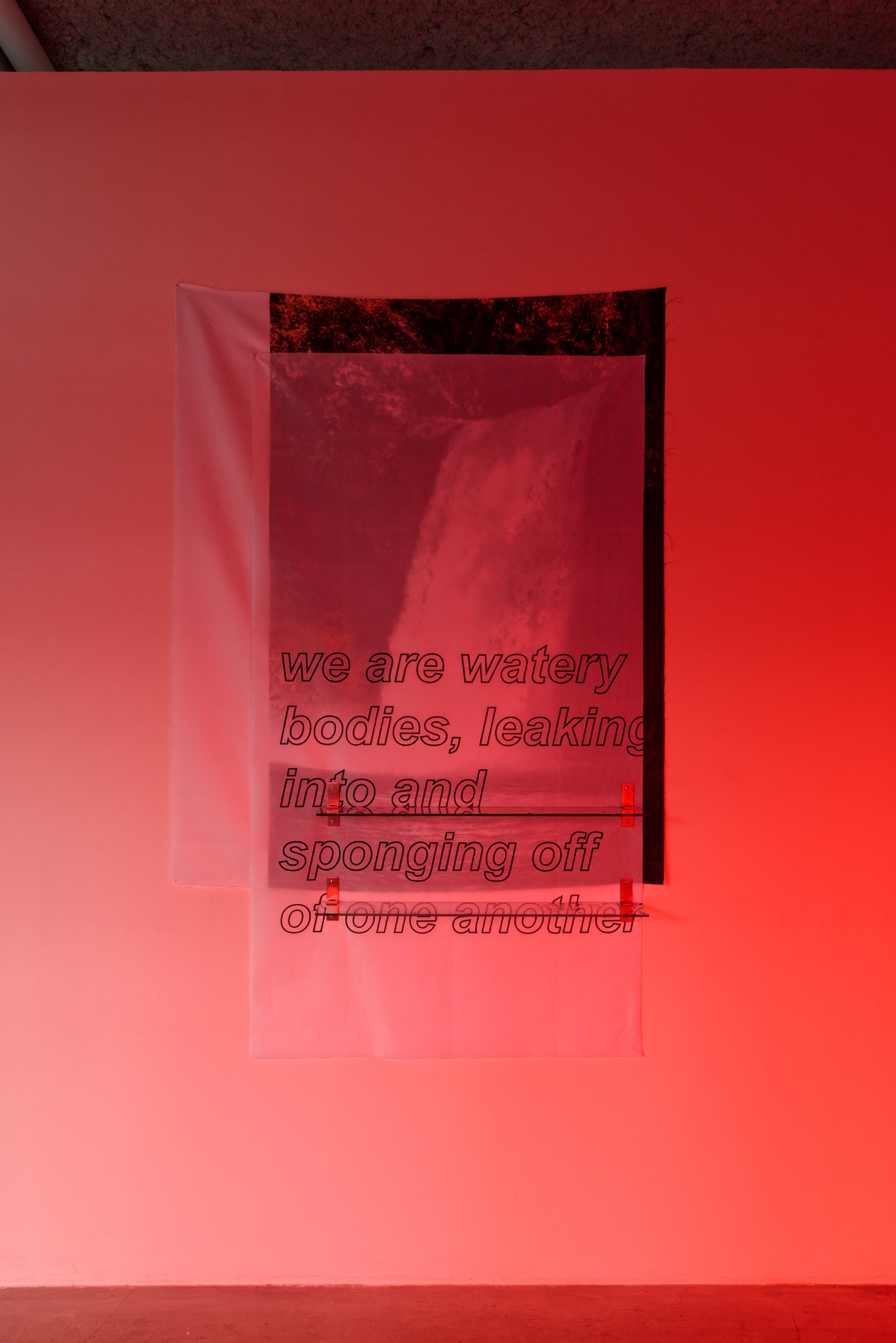All the volcanoes, and their sisters
On the numerous nights I find myself thinking of Paul Maheke’s practice it often leaves me in tensed obscurities : it triggers the same kind of mental translations as the sight of high tides - which makes me very aware of the competing forces (or the combined effort?) of the moon and the sun and makes me wonder about water’s gravity - The type of questions you ask yourself while whispering to your own ear, and which, in a quarter of a second, allow you to draw far fetched connections between individualness and the black holes of the universes. While avoiding the pitfall of systemisation it would be then interesting to use this observation look at the artist’s work through a concept, a gesture: that of cross-referencing. An entry point that becomes particularly telling if one looks closely at Paul Maheke’s project «Becoming a Body of Water or How to Unlearn Resistance as Opposition» that he has developed over the last few months (August 2016 - June 2017).
Grounded in Astrida Neimanis’ research on hydrofeminism, the scientific explorations of Dr. Masuru Emoto and Dr. Luc Montagnier into memory of water, and most probably informed by a residency the artist took part in at the Impulstanz Dance Festival in Vienna during the summer of 2016, the project materialised in three performances (Union Pacific, London, The Showroom, London, Tate Modern, London) and three solo shows (Center, Berlin, Assembly Point, London) -- the last one being «Acqua Alta» at Sultana gallery in Paris. However, it is rather unsatisfying to section the different iterations of the project in such ways as they seem to operate vis-a-vis and echo one another.
For instance, a video can be used in one exhibition and then be repurposed for a performance, similarly, a performance can become the central element of a video installation. For «What Flows Through and Across» at Assembly Point (January - February 2017), Paul Maheke used the exhibition space as a screening room for his latest video, an environment to house his latest sculptures and a dance studio for a series of open rehearsals which culminated in a closing night of performance. In order to get a better understanding of where the necessity of these overlaps seats we must pay particular attention to the performative nature of the artist’s practice as it is there that we can witness the first crossovers.
As a self-taught dancer, Paul Maheke has nurtured a specific relationship to his body and his movements which led him to develop, in the first instance, a body of work exploring the connection between a desired body - the fetish -, the colonised body - whose subjectivity is denied -, its spectacularisation in relation to the dominant external gaze. With «Becoming a Body of Water or How to Unlearn Resistance as Opposition» the artist was interested in locating the energies and multi-layered stories stocked in the movements his body is able to generate, spontaneously, or in response to a rhythm, to a music. This ability is then scuttled through two different processes: the struggle/conflict and the loop.
The struggle and the loop are two recurring motives in Paul Maheke’s last performances. The struggle in which the dancer engages with his body as well as the battle between the water contained in this body and the envelope that contains it. This performed struggle is also a fight against performativity itself : the refusal to buy into what is expected from a body as his (as in masculine, brown and queer). This is where the loop comes into play. The repetition of the same movements, sequenced and repeated, is a way to fight against the understanding of performance as the staging of an isolated body that would be looked at as a surface. For the artist, the process of becoming a body of water strangely implies to partly break with a sense of fluidity in the movements.
Paul Maheke’s sculptures and installations have similar functions but operate on a rather different mode. While often playing with transparency, micro-sensitivity and the presence of printed texts, they mostly take the form of either objects that are used to show better - shelves, fish tanks... - or hide better - curtains - to in turn subvert their original function. In this twist the sculptures too seem to resist performativity. They then become the secondary subtitles to the artist’s videos and performances - and again, allow us to hear their multiple resonances.
At Sultana, once again, Paul Maheke’s works echo to one another and to the sonic ripples of Sophie Mallet’s soundwork, this time to flood the space of the gallery. Here we hear the volcanoes coming to life beneath our feet.
Cédric Fauq
♡
Tous les volcans, et leurs sœurs
Les nuits où je pense à la pratique de Paul Maheke, si elles sont nombreuses, me laissent souvent dans des obscurités en tension : Elles provoquent les mêmes translations mentales que la vue des marées hautes – qui me font sentir les forces en compétition (ou l’effort conjoint ?) de la lune et du soleil, et me font m’interroger sur la gravité de l’eau - : Le type de questions que l’on se pose en chuchotant à sa propre oreille, qui, en un quart de secondes, font l’immense pont entre le territoire de l’individu et les black holes des univers. A partir de ce constat il me semblait intéressant, tout en évitant l’écueil de la systémisation, d’appréhender le travail de l’artiste sous une figure, un geste : celui du renvoi. Un point d’entrée particulièrement révélateur si l’on s’attache notamment au projet que Paul Maheke a développé au cours de ces derniers mois : « Becoming a Body of Water or How to Unlearn Resistance as Opposition » (Août 2016 – Juin 2017).
Prenant pour point de départ les recherches d’Astrida Neimanis à propos de son concept d’hydroféminisme, les découvertes des docteurs Masuru Emoto et Luc Montagnier sur la mémoire de l’eau et sans doute porté par la résidence que l’artiste a effectué au festival de danse Impulstanz à Vienne au cours de l’été 2016, ce projet a pris la forme de trois performances (Union Pacific, London ; The Showroom, London ; Tate Modern, London) et s’est manifesté en trois expositions (Center, Berlin ; Assembly Point, London), la dernière, « Acqua Alta »,étant présentée à la galerie Sultana à Paris. Néanmoins, il est peu satisfaisant de catégoriser les différentes itérations de ce projet de cette manière tant les formes et médiums employés par l’artiste se font écho.
Ainsi une vidéo utilisée pour une exposition peut aussi être au cœur d’une performance, tout comme une performance peut être au cœur de l’exposition. Pour « What Flows Through and Accross » à Assembly Point (Janvier – Février 2017), Paul Maheke avait fait du même espace un espace de projection pour sa dernière vidéo, un espace d’exposition pour ses dernières sculptures ainsi qu’un espace de répétition – ouvertes au public -, qui avait donné lieu à une performance de clôture. Pour mieux comprendre où se trouve la nécessité de ces chevauchements, il faut partir du contenu même de la pratique performative de l’artiste.
C’est là, en effet, que se trouvent les premiers renvois. Danseur autodidacte, Paul Maheke a construit une relation particulière à son corps et à ses mouvements, qui l’a mené à développer, en premier lieu, un travail sur le rapport entre le corps désiré - le fétiche -, le corps colonisé – à la subjectivité refusée -, sa spectacularisation et l’implication du regard extérieur dans ces rapports. Pour « Becoming a Body of Water or How to Unlearn Resistance as Opposition », il était alors question, pour l’artiste, de localiser les énergies et strates d’histoires emmagasinées dans les mouvements dont son corps est capable, effectués naturellement, ou en réponse à un rythme, à une musique. Cette capabilité est alors sabordée, et ce de deux manières différentes : par la lutte et par la boucle.
La lutte et la boucle sont deux motifs récurrents des dernières performances de Paul Maheke. Une lutte du danseur avec son corps mais aussi de l’eau contenue dans ce corps avec l’enveloppe qui la contient. La lutte est aussi la lutte contre la performativité elle-même : le refus de donner ce qui est attendu d’un corps comme celui de Paul Maheke. Et c’est là que la boucle entre en jeu. La répétition des mêmes mouvements, leurs arrêts, leurs reprises, est une manière de lutter contre la nécessité de la performance en tant que mise en spectacle d’un corps individualisé qui deviendrait alors surface. Etrangement, devenir un corps d’eau passe, pour l’artiste, par le refus partiel de la fluidité des mouvements.
Les sculptures et installations de Paul Maheke, elles, ont des fonctions similaires mais opèrent d’une tout autre façon. Jouant souvent de la transparence, du micro-sensible et de la présence de textes imprimés, elles prennent généralement la forme d’objets qui servent ou bien à mieux montrer – étagères, aquariums... - ou à mieux cacher – rideaux – pour finalement subvertir leurs utilisations initiales. Dans ce renversement, les sculptures, elles aussi, refusent la performativité. Elles deviennent alors les seconds sous-titres des vidéos et des performances de l’artiste – et là encore, on entend l’écho -.
A Sultana, au son de l’œuvre de Sophie Mallet, les œuvres de Paul Maheke résonnent donc une fois de plus, cette fois-ci pour inonder l’espace de la galerie. On entend, sous nos pieds, les volcans s’activer.
Cédric Fauq


